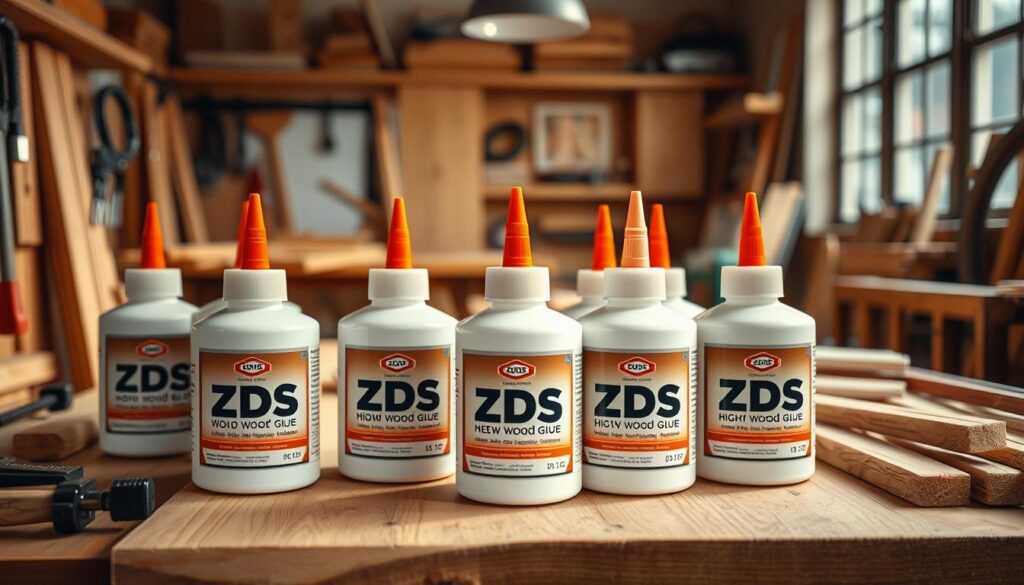Check out our guide to the top wood glues of 2024. We’ve picked the best for durability, versatility, and strength. These glues are great for fixing furniture, DIY projects, and professional woodworking. Find the perfect glue for your project.
We’ve reviewed and ranked the best wood glues. This helps both pros and hobbyists make smart choices. Our analysis covers glues for different wood types, like softwood, hardwood, and exotic materials.
Key Takeaways
- Discover the best wood glue options for 2024, perfect for multiple applications.
- Find out which products offer the strongest wood glue capabilities for excellent bonding.
- Understand the differences between various wood glue formulations.
- Learn about top-rated wood glue options based on expert reviews and user feedback.
- Get insights on the best wood adhesive for your specific project needs.
Introduction
The woodworking world is changing fast, making it key to pick the right glue. Whether you’re a pro carpenter or a DIY fan, picking the best glue is crucial. It affects how well your projects last and look.
From small crafts to big furniture, the right glue makes joints strong and lasting. This is true for all kinds of woodworking projects.
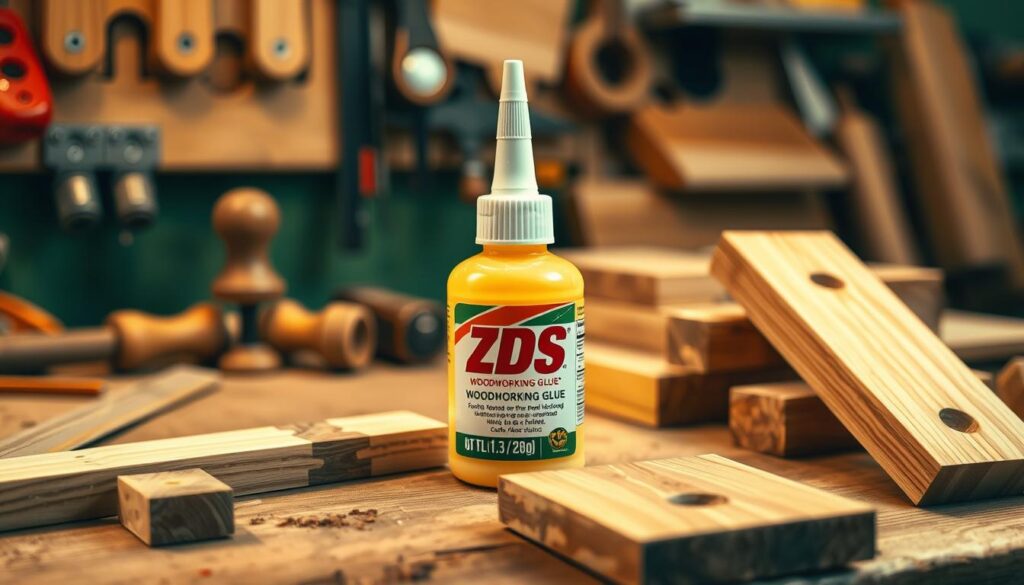
We’ll look into the best woodworking glue and its importance. The right glue makes building easier and makes your work stronger. It’s vital to choose well.
Keep reading for top picks on wood glue for 2024. These are great for both home and work projects.
Understanding Wood Glues
Wood glues come in different types, each with its own strengths. Knowing how they work helps us pick the right one for our projects.
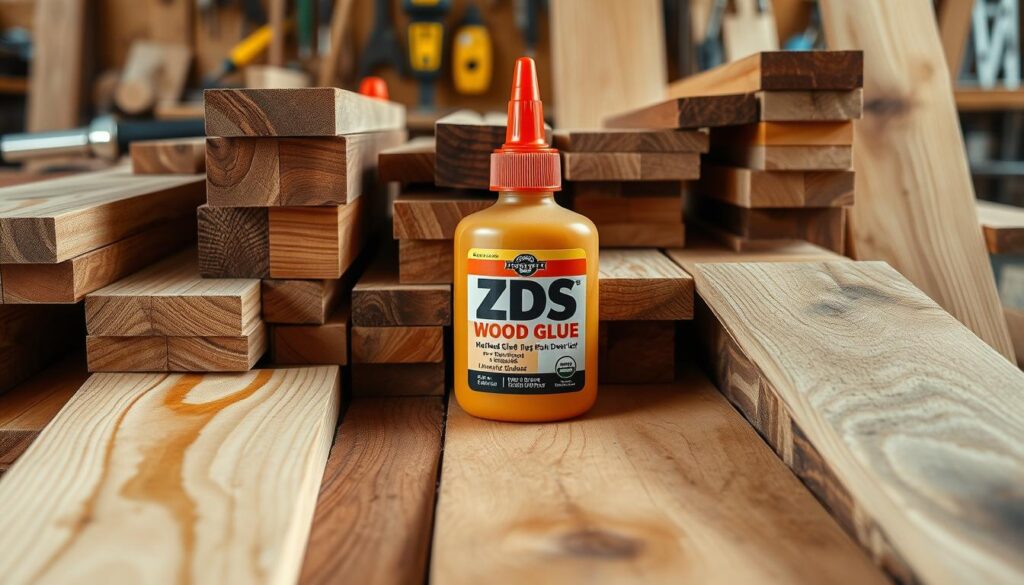
PVA (Polyvinyl Acetate): PVA glue is very common and reliable. Elmers wood glue is a good example. It’s water-based, easy to clean, and holds well. You have about 5-10 minutes to move things around before it sets.
Polyurethane: Polyurethane glues are strong and versatile. They expand as they dry, filling gaps. They’re good for both inside and outside projects but need careful clamping and drying time.
Hide Glue: Hide glue has been used for centuries. It’s made from animal hides and sticks well initially. It can be made sticky again with heat and moisture. It’s not as strong as modern glues but great for fixing old things.
Epoxy: Epoxy glues are very strong and last long. They’re good for bonding different materials and filling gaps. They take a long time to dry but are worth it for strong joints.
Each glue has its own special properties. For example, PVA glues like Elmer’s don’t shrink much, making a strong bond. It’s important to think about these things when choosing a glue for your project.
Elmer’s has a wide range of wood glues. Their website, Elmers.com, has many options for woodworkers. They have special glues for different needs, from hobbyists to professionals.
Key Considerations:
- Open Time: How long the glue stays workable.
- Tackiness: How well it sticks at first.
- Shrinkage: How much it shrinks when it dries.
- Weather Resistance: How well it holds up to weather.
Knowing these things helps us choose the right glue. Whether it’s Elmer’s or another brand, we can make a better choice.
Top-Rated Wood Glues
Choosing the right wood glue is key for woodworking projects. Brands like Elmer’s, Titebond, and Gorilla glue are top choices. They are praised for their bond strength, drying time, and ease of use.
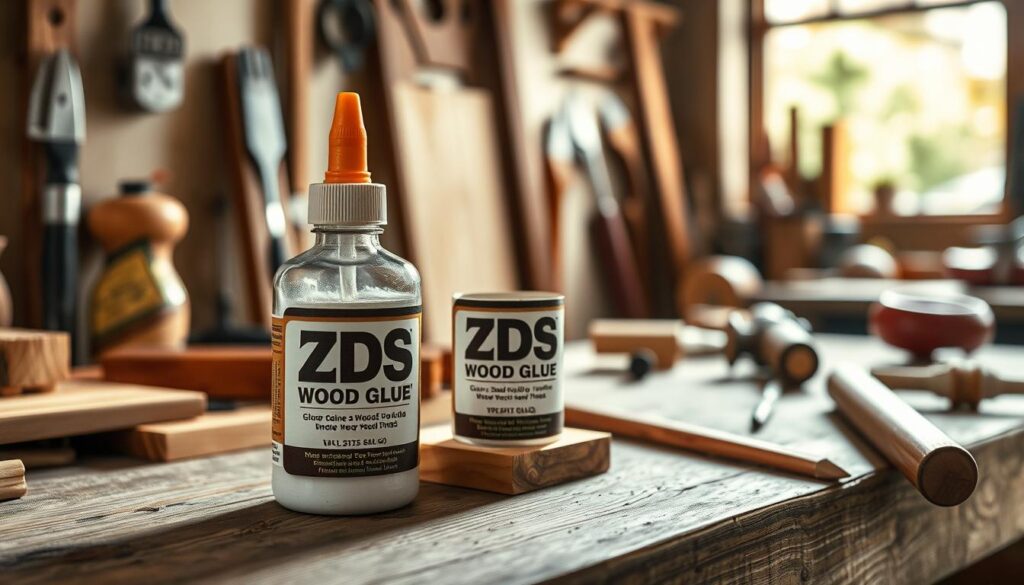
Elmer’s Wood Glue is a top pick for furniture making. It’s easy to apply and forms a strong bond. It’s perfect for indoor projects and keeps your workspace clean.
Titebond Wood Glue is known for its strong bond and quick drying. It’s great for both pros and DIYers. It works well in various conditions, from furniture to big constructions.
Gorilla Wood Glue is known for its strength and versatility. It works indoors and outdoors. Its fast drying time makes it ideal for quick projects.
Let’s compare these wood glues:
| Brand | Bond Strength | Drying Time | Ease of Application |
|---|---|---|---|
| Elmer’s | High | Moderate | Easy |
| Titebond | Very High | Fast | Moderate |
| Gorilla | Very High | Fast | Moderate |
Reviews from Amazon and Home Depot show these glues are highly rated. Each brand offers unique benefits. This lets users choose the best glue for their needs.
How to Choose the Right Wood Glue
Choosing the right wood glue is key to a successful woodworking project. The best adhesive for wood depends on the wood type, needed strength, clamping time, and how you apply it. Here’s what to think about when picking wood glue:
- Wood Compatibility: Different woods react differently to glue. Hardwoods like oak or maple need a strongest wood to wood glue for a strong bond.
- Strength Requirements: Decide how strong your project needs to be. For detailed furniture, choose the best wood glue for furniture for a lasting bond.
- Clamping Time: Look at the glue’s clamping time. Projects with detailed parts might need longer to set right.
- Application Process: Some glues need special application methods, like pre-dampening, which affects your choice.
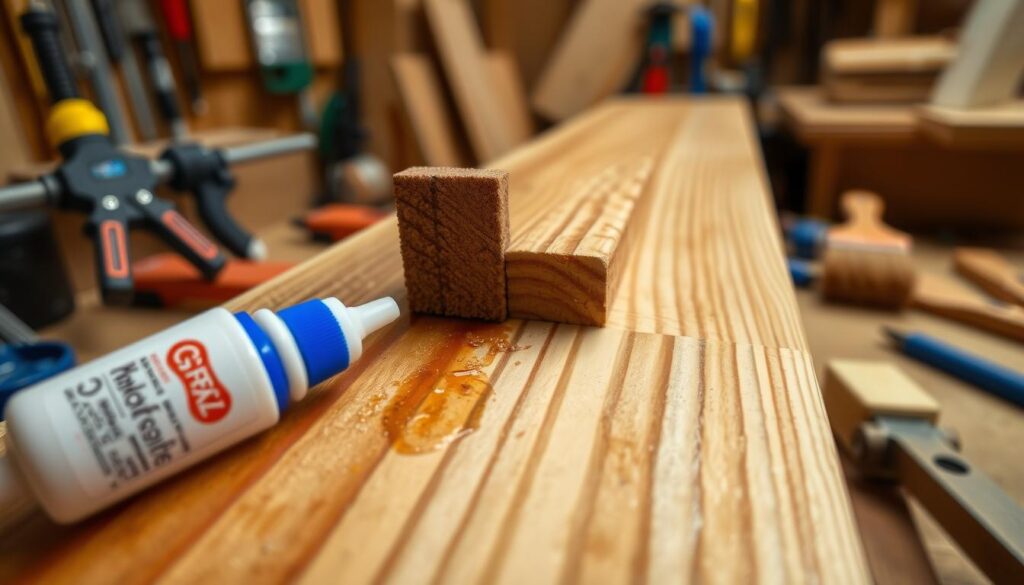
Choosing the right glue is crucial for professional results, whether it’s fine furniture or heavy construction. For antique furniture, use the best wood glue for furniture to keep its historical look and strength. For heavy construction, go for glues known as the strongest wood to wood glue for strong and lasting joints.
| Factor | Considerations |
|---|---|
| Wood Compatibility | Match glue types to the specific wood (hardwoods, softwoods, engineered wood) |
| Strength Requirements | Select the strongest glue based on the project’s load-bearing needs |
| Clamping Time | Ensure you have the patience and time for appropriate clamping |
| Application Process | Follow the glue’s application guidelines for best results |
Application Tips for Wood Glues
Knowing how to apply wood glues is key for a strong bond. Whether you’re using the best glue for repairing cedar boards, best wood adhesive, or the best woodworking glue, these tips will help. They ensure your work lasts a long time.
Start by making your wood surfaces ready. Clean them to get rid of dirt, dust, or oil. Use a vacuum or a damp cloth for this. Make sure the surfaces are dry before moving on.
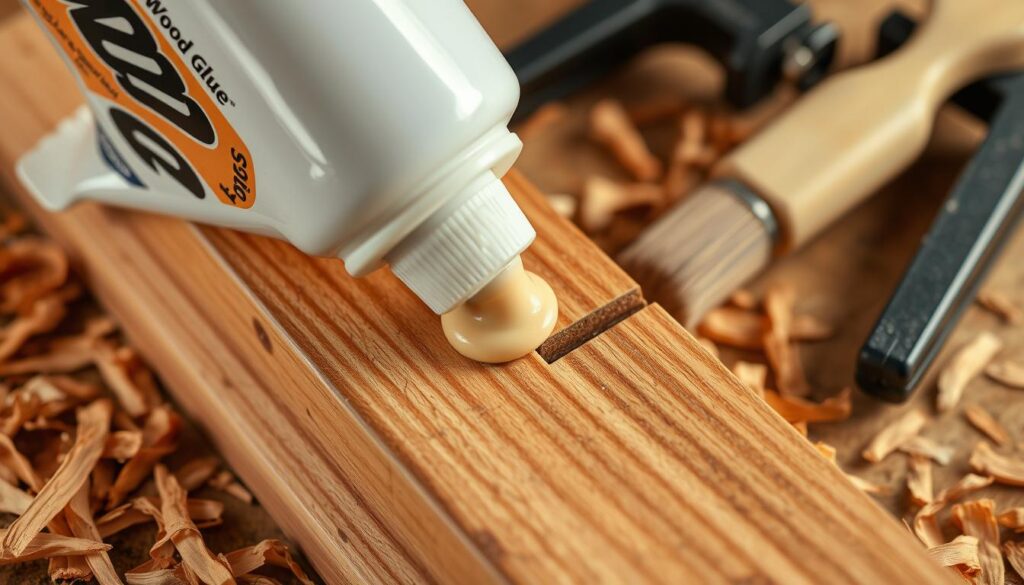
Sanding the wood surfaces will help your glue stick better. Lightly sand the areas to make them rough. This lets the glue bond stronger. Use medium-grit sandpaper and clean off any dust.
When applying glue, be precise. Spread it evenly on both surfaces. Use a brush or a plastic spreader for this. Don’t put too much glue, as it can weaken the bond and take longer to dry.
“The key to a strong woodworking bond lies in even glue distribution and proper surface preparation.” – Woodworking Experts
Clamping is also very important. Press the surfaces together and clamp them. Make sure the pressure is even and don’t clamp too hard. This can push out too much glue and weaken the bond.
Let the glue dry for the time the manufacturer says. Each glue type dries at its own pace. Follow these times for the best results.
By following these tips, you’ll get the most out of your best glue for repairing cedar boards, best wood adhesive, or any other glue. Your woodworking projects will be strong and last a long time.
Comparative Analysis
In this section, we explore the top rated wood glue products available today. We’ve gathered feedback from woodworkers, DIY fans, and real users. This helps us give you a detailed look at the strongest wood glue options. We’ll show you their special features and how they perform in real projects. This will help you pick the best wood on wood glue for your project.
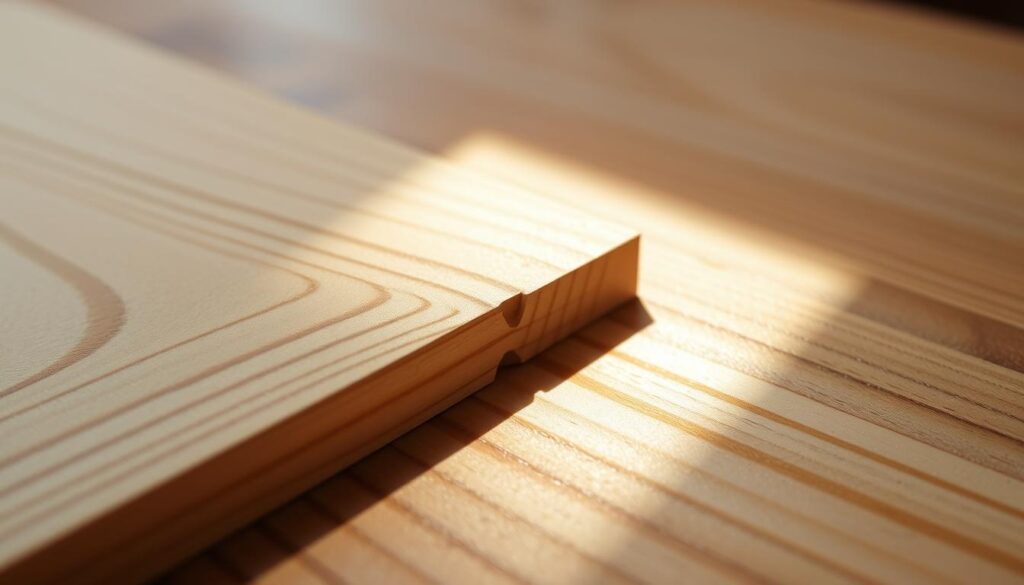
| Brand & Model | Unique Qualities | Price Range | User Experience |
|---|---|---|---|
| Gorilla Wood Glue | Water resistance, long-lasting bonds | $6 – $9 | Highly rated for ease of use and durable results |
| Titebond III | Waterproof, ANSI/HPVA Type I water-resistance | $7 – $10 | Preferred by professionals for its superior adhesion |
| Elmer’s Carpenter’s Wood Glue Max | Stainability, sandable, and easy to clean-up | $5 – $8 | Praised by users for excellent finishing qualities |
| Franklin International 1414 | No-run formula for vertical surfaces | $15 – $20 | Highly appreciated for specialized applications |
This table gives you a quick look at each top rated wood glue. It helps you choose the strongest wood glue based on your needs. Remember, the right best wood on wood glue depends on your project and what you like.
Advanced Wood Glue Applications
Exploring advanced woodworking opens new doors. Here, the right wood adhesive is key. It’s vital for musical instrument repair, boat building, and complex millwork. The right glue makes your projects last longer and look better.
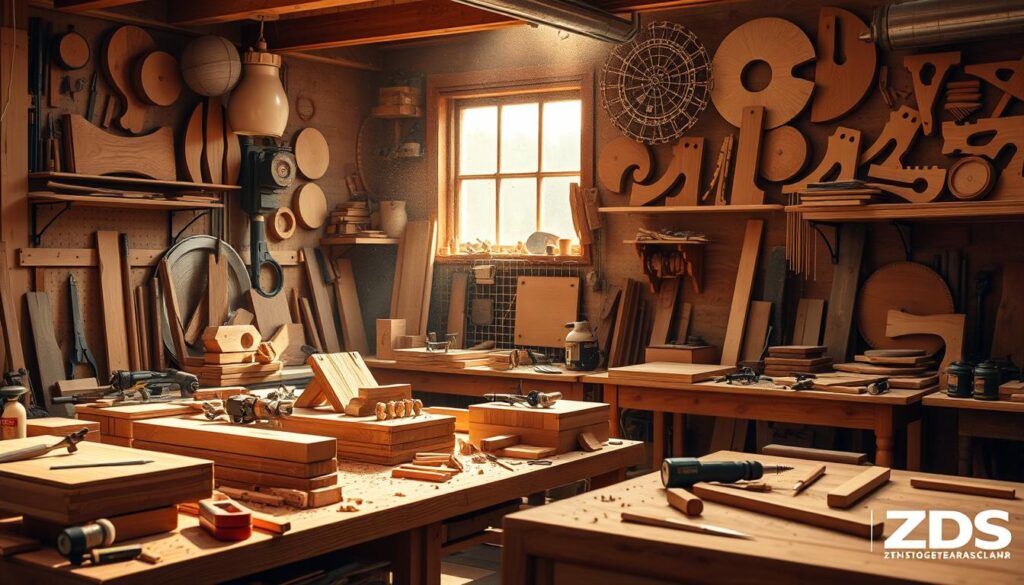
For fixing musical instruments, special glues are needed. They must handle tension and vibrations well. The best adhesive keeps the sound clear and the instrument strong.
Boat building needs glues that resist water. Advanced woodworking often faces water challenges. Marine-grade adhesives are made for this, keeping bonds strong.
Architectural millwork is another area where advanced glues shine. It’s all about precision and looks. The strongest glue not only holds but also makes joints seem invisible.
| Application | Required Adhesive Features | Recommended Adhesives |
|---|---|---|
| Musical Instrument Repair | High bond strength, flexibility | Titebond III, Franklin’s Hide Glue |
| Boat Building | Waterproof, strong adhesion | Gorilla Glue, Loctite Marine Epoxy |
| Architectural Millwork | Precision, aesthetic bonding | Elmer’s Carpenter’s Wood Glue, DAP Weldwood |
Choosing the right glue for your woodworking task is crucial. It ensures your work looks great and lasts long.
Environmental and Safety Considerations
Choosing the best wood glue means looking at its environmental and safety impact. Today, more people want eco-friendly wood adhesive because they care about the planet.
Safe wood glues have low VOCs and are non-toxic. This makes them perfect for safe use. Brands like Elmer’s Wood Glue and Titebond have tested their products. They ensure they meet safety and environmental standards.
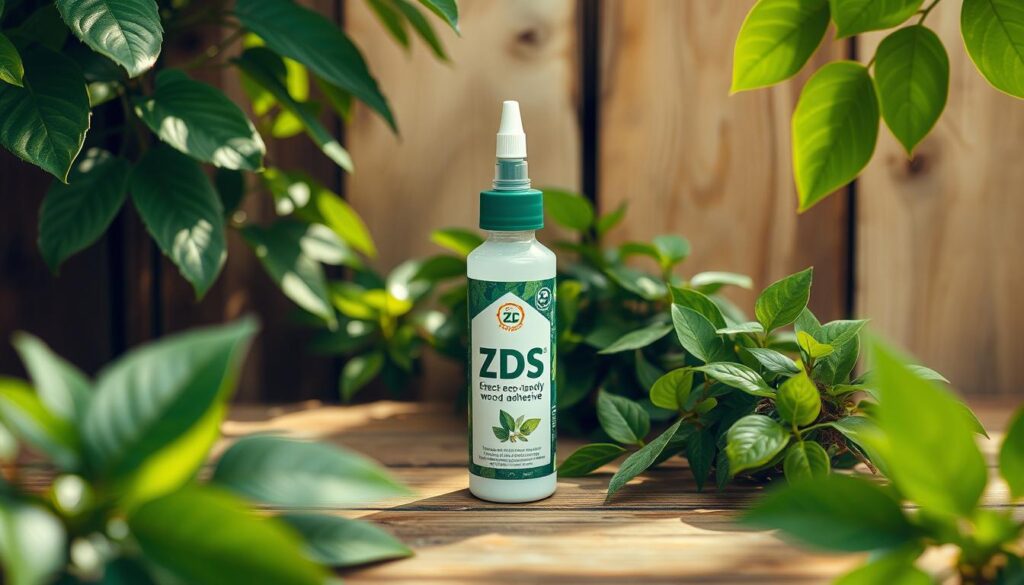
Also, makers are working on eco-friendly wood adhesives that are strong and safe. ZDS™ is leading this effort. They create adhesives that are good for the planet and work well.
| Brand | VOC Content | Non-Toxic |
|---|---|---|
| Titebond | Low | Yes |
| Elmer’s | Minimal | Yes |
| ZDS™ | Very Low | Yes |
In summary, picking the best wood glue means looking at its strength and its impact on the environment and safety. By choosing eco-friendly wood adhesive, we help make woodworking better for our planet and our health.
Conclusion
Finding the best adhesive for wood is key for both hobbyists and pros. Each top rated wood glue has its own strengths and uses. This ensures strong, reliable joints.
The best wood glue for furniture must bond well and meet your needs. This includes environmental and safety factors. Using the right glue can greatly improve your project’s durability and quality.
“Choosing the right wood glue makes all the difference in achieving professional-grade results. Prioritizing both quality and sustainability ensures your work stands the test of time.”
Further Resources
If you want to learn more about wood adhesives, there are many great sources out there. Whether you’re a DIY fan or a pro carpenter, these resources will help you a lot. They offer detailed info, useful techniques, and product tips.
Check out woodworking magazines like Fine Woodworking and Woodcraft Magazine. They often have reviews and expert advice on new adhesives.
Online forums like Woodworking Talk and LumberJocks are full of discussions and tips from woodworkers worldwide. These places let you talk to many people who know a lot about woodworking glue. You can learn a lot from their experiences.
Trade publications and product manuals from brands like Titebond, Elmer’s, and ZDS™ are also great. They have lots of wood adhesive guidance. They cover everything from product details to advanced techniques.
Workshops and seminars at craft stores and woodworking clubs are also a good idea. They’re a great way to improve your skills and learn the latest in woodworking.
FAQ
Which wood glue is the strongest?
Wood glue strength varies by product and use. Titebond III and Gorilla Wood Glue are top choices. They bond well with many wood types, including hardwoods and softwoods.
Is Gorilla Glue better than wood glue?
Gorilla Glue is great for outdoor and heavy-duty jobs. But, wood glues like Titebond or Elmer’s PVA are better for indoor projects. They’re easier to use and clean up.
What is the strongest adhesive?
Epoxy adhesives are the strongest. They bond incredibly well and resist moisture and temperature changes. This makes them perfect for tough woodwork.
What wood glue do carpenters use?
Carpenters pick from various glues for different projects. Titebond Original and Titebond II are favorites for their strength and easy clean-up. Elmer’s Carpenter’s Wood Glue is also popular for general woodworking.
What wood glue do professionals use?
Pros rely on top-quality glues like Titebond III. It’s strong, water-resistant, and has a long open time. For specific tasks, they also use epoxies and polyurethane glues, like Gorilla Glue.
What are the 5 types of wood glue?
There are five main wood glue types: PVA, polyurethane, hide glue, epoxy, and cyanoacrylate (CA) glue. Each has unique properties for different woodworking needs.


